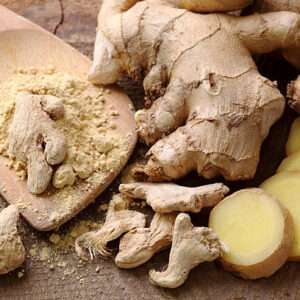Ethiopian Sesame Seeds
Ethiopia is one of the leading sesame seed producer and exporter countries in the world. China, India and Ethiopia are the top three sesame seeds producing country in the world. While China and India are the top consumer for sesame seed, Ethiopia exports almost all of its products to the rest of the world. Ethiopian Whitish Humeral Sesame Seed is the world leading brand for its high quality. It is produced in the fertile low land of North Western part of Country. The other major brand next to humeral sesame seed is whitish Wollega Sesame Seeds. It is produced in the South Western part of the Country.
We offer the Humera type of sesame, which is known to be a premium variety. Native to the Humera district in northwest Ethiopia, it is prized for its white color, large size and special sweet, nutty taste
Whitish Humera Type
This has a good demand in the world market & known for its top quality. Also used as a reference for grading in the international market. It has similar smaller proper size and whiter in color, whitish sesame seeds, very good natural whitish color, new crop, well machine cleaned purity min 99%, oil content min 48%, moisture max 6%, free from any kind of infestation etc
Wollega Type
Whitish sesame seeds wollega type, usually it is suitable for oil crashing, machine cleaned min 98.5% pure, oil content min 51%, moisture max 6%, free from any kind of infestation etc.
| Properties | Humera Type | Wollega Type |
|---|---|---|
| Purity | Min. 99% | Min. 98% |
| Admixture | Max. 1% | Max. 2% |
| Oil Content | Min. 48% | Min. 51% |
| Other Color Seeds | Max. 1.5% | Max. 2.0% |
| F.F.A | Max. 2% | Max. 2% |
| Moisture | Max. 6% | Max. 6% |
|
Cleaned, fumigated, free from any alive or dead insects and fit for human conception |
||

Humera Type

Wollega Type
Common Packing For Container Shipment
| Products | Packing | Container |
|---|---|---|
| Humera Type, Wollega Type Sesame Seeds | 50Kgs PP Bags | 360 Bags in 20’FCL 492 Bags in 40’FCL |
Origin of Sesame Seeds with production
Tanzania (16%)India (16%)Sudan (9%)China (8.10%)China (8.10%)Ethiopia (7.90%)Myanmar (7.20%)Nigeria (5.97%)
Ethiopian Sesame – Production and Potential
- Due to its importance as a major export commodity the area coverage and production has increased in the last consecutive years
- There is an enormous potential to expand sesame seed production in Ethiopia through cultivation of additional new land.
- Despite the traditional way of farming yields for oilseeds are on the viagra online canada same level as other producing countries.
- The government is enhancing the investment in the oilseeds sector with an extended package of incentives.
- Hence with the transfer of technology and the provision of inputs, the increment of production and yield will be achieved strongly.
- Availability of Virgin fertile new areas which can be cultivated on large scale + cheap and abundant labor are the key indicators of the future potential.
Nutrition Facts
- Serving Size: 100gm
- Amounts per servings
-
Calories 573Calories from Fat 420
- % Daily Values*
-
Total Fat 50 g76%
-
Saturated fat 7 g35%
-
Polyunsaturated fat 22 g
-
Monounsaturated fat 19 g
-
Cholesterol 0 mg0%
-
Sodium 11 mg0%
-
Potassium 468 mg13%
-
Total Carbohydrate 23 g7%
-
Dietary fiber 12 g48%
-
Sugar 0.3 g
-
Protein 18 g36%
-
Vitamin A0%Vitamin C0%
-
Calcium97%Iron81%
-
Vitamin D0%Vitamin B-640%
-
Vitamin B-120%Magnesium87%
- *Percent Daily Values are based on a 2,000 Calorie diet.
Facts on Sesame Seeds
Sesame seeds is a flowering plant in the genus Sesamum, also called benne. Numerous wild relatives occur in Africa and a smaller number in India. It is widely naturalized in tropical regions around the world and is cultivated for its edible seeds, which grow in pods or “buns”. The world harvested 6.2 million metric tonnes of sesame seeds in 2014, with Tanzania, India, and Sudan as the largest producers.
Sesame seed is one of the oldest oilseed crops known, domesticated well over 3000 years ago. Sesamum has many other species, most being wild and native to sub-Saharan Africa. Sesamum indicum, the cultivated type, originated in India and is tolerant to drought-like conditions, growing where other crops fail.
Sesame has one of the highest oil contents of any seed. With a rich, nutty flavor, it is a common ingredient in cuisines across the world. Like other nuts and foods, it can trigger allergic reactions in some people.





